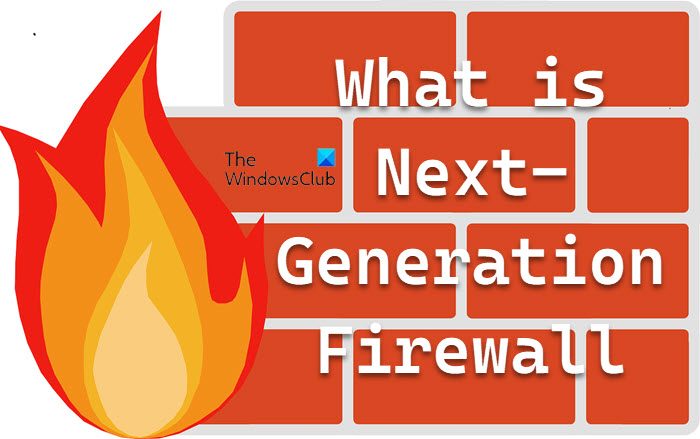Maybe at some point, you have heard the term Next-Generation Firewall or NGFW for short. A lot of people have no idea what it is all about, and there is nothing wrong with that because it is a relatively new concept when compared to the traditional firewall.

Here’s the thing, the world of computers is expanding and evolving, and this is more apparent in the cloud. As such, traditional firewalls are not as useful anymore as they lack the capabilities to protect at a scale both individuals and companies require.
Folks working with sensitive information need the services of specialized firewalls that are programmable, multifunctional, and able to work side-by-side with various anti-virus tools. Not only that, but companies are also expecting these firewalls to intelligent when scanning through a vast amount of data.
This is where the Next-Generation Firewall comes into play because it has all that is required to keep data safe.
What is Next-Generation Firewall (NGFW)?
A Next-Generation Firewall (NGFW) is a device that focuses on network security. It provides capabilities that are beyond that of a traditional firewall. While traditional firewalls tend to provide stateful inspection of outgoing and incoming network traffic, an NGFW provides additional features such as integrated intrusion prevention, application awareness and control, and cloud-delivered threat intelligence.
This type of firewall also comes with the ability to address evolving security threats, which means, it is not as static as traditional methods.
Is a Next-Generation Firewall based on software or hardware?
Being dynamic is one of the best aspects of the NGFW, meaning users can implement it into a cloud infrastructure or a regular system. Furthermore, it is possible to install some NGFWs as software or hardware.
We also understand that some organizations use NGFWs as a cloud service or cloud firewall. A few people call it Firewall-as-a-Service or FWaaS for short.
Read: Difference between Hardware Firewall & Software Firewall
What should you look for in a Next-Generation Firewall?
The best NGFWs generally deliver four core benefits to individuals and organizations. If your NGFW lacks even one of these core benefits, it will fail to protect your data 100 percent.
- Comprehensive network visibility
- Fastest time to detection
- Advanced security and breach prevention
- Product integrations and automation
1] Comprehensive network visibility
It is impossible to protect what you’re unable to see, and as such, one must monitor all the happenings on your network right around the clock in order to spot bad behavior and stop it in its tracks.
Whatever next-gen firewall technology you’re using should be able to spot threat activity across hosts, devices, users, and networks. Not only that, but the firewall must also be able to tell where the threat originated, where it has been across your extended network along with what the threat is doing at this very moment.
Your NGFW should have the option to see active websites and applications, along with file transfers, communications between multiple virtual machines, and more.
2] Fastest time to detection
When it comes down to detecting threats, the current industry standard is around 100 to 200 days. This is not good enough, which is why your Next-Generation Firewall should be able to do the following:
- Detect any threats in mere seconds.
- If there is a successful breach of the system, the firewall must detect it within minutes or hours.
- Alerts must be prioritized to allow the user to take swift action to get rid of threats.
- Finally, consistent policies must be deployed in order to make life easier for the user.
3] Advanced security and breach prevention
The main purpose of a firewall is to prevent breaches of any kind in order to safeguard an organization. Still, preventive measures are never 100 percent reliable, and probably will never be; therefore, every firewall should come packed with advanced features to detect malware and other threats quickly.
- Methods designed to prevent attacks before they enter the network.
- URL filtering technology to enforce policies on millions of URLs.
- Next-generation IPS is made for spotting stealthy threats and stopping them in their tracks.
- Built-in advanced malware protection and sandboxing to find and destroy threats easily.
4] Product integrations and automation
Here’s the thing, the next-generation firewall you’re using should be able to communicate and work closely with other security tools. Therefore, you must select a firewall that can do the following:
- Shares threat information automatically, along with policy, event data, contextual information, and more.
- Security tasks such as policy management and tuning, impact assessment, and user identification should be automated.
- Easy integration with other tools designed by the same vendor.
Read: A1RunGuard is a Free Process Firewall for Windows computers
What is a next-gen firewall?
A next-generation firewall (NGFW) is a firewall that moves beyond port or protocol inspection blocking in a bid to add application-level inspection among other things. It also brings intelligence from outside the firewall, which is a nice touch.
Read: Different types of Firewalls: Their advantages and disadvantages
What is the difference between a Next-Gen Firewall and a standard Firewall?
Next-Generation Firewall technologies are designed to provide stateful inspection of incoming and outgoing traffic along with other key additional features. As for standard firewalls, they provide partial application control, and as such, are not as effective at dealing with threats when compared to next-gen firewalls.
What is the difference between NGFW and IPS?
An Intrusion Prevention System (IPS) is a network security tool that monitors a network for malicious activity and takes action to prevent it. Next-Generation Firewall technologies are designed to provide stateful inspection of incoming and outgoing traffic along with other key additional features.
Leave a Reply